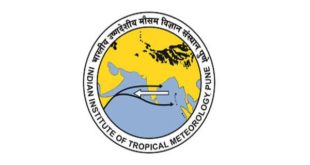CONTEXT:
Rainfall over the southern peninsular region has been deficient so far, indicating that the northeast monsoon has remained subdued this year.
Inter Tropical Convective Zone (ITCZ):
- The current position of the ITCZ has also contributed to the poor rainfall during the ongoing monsoon season.
- The ITCZ is a low-pressure belt, whose northward and southward movements along the equator determine the precipitation in the tropics.
- Currently, the ITCZ is located to the north of its normal position.
MAIN POINTS
Two seasons:
- About 75% of the country’s annual rainfall is received from the Southwest monsoon between June and September.
- The Northeast monsoon occurs during October to December, and is a comparatively small-scale monsoon, which is confined to the Southern peninsula. It is called the winter monsoon.
Northeast Monsoon and Rainfall:
- After the complete withdrawal of the Southwest monsoon from the country takes place by mid-October, the wind pattern rapidly changes from the south-westerly to the north-easterly direction.
- The period after the Southwest monsoon season, from October to December, is the peak time for cyclonic activity in the North Indian Ocean region covering the Arabian Sea and the Bay of Bengal.
- The winds associated with the formation of low pressure systems, depressions, or cyclones influence this monsoon, and therefore, the rainfall.
Regions :
- The rainfall associated with the Northeast monsoon is important for Tamil Nadu, Puducherry, Karaikal, Yanam, coastal Andhra Pradesh, Kerala, north interior Karnataka, Mahe and Lakshadweep.
- Tamil Nadu records about 48% of its annual rainfall during these months, making it the key factor for undertaking agricultural activities and reservoir management in the state.
- Some South Asian countries such as Maldives, Sri Lanka and Myanmar, too,record rainfall during October to December.
Reasons for deficient rainfall :
- La Niña conditions enhance the rainfall associated with the Southwest monsoon, but has a negative impact on rainfall associated with the Northeast monsoon.
- La Niña (Spanish for ‘little girl’) refers to the large-scale cooling of the ocean surface temperatures in the central and eastern equatorial Pacific Ocean, coupled with changes in the tropical atmospheric circulation, namely winds, pressure and rainfall.
- It usually has the opposite impacts on weather and climate as El Niño, which is the warm phase of the so-called El Niño Southern Oscillation (ENSO).
- El Niño (Spanish for ‘little boy’) is the abnormal surface warming observed along the eastern and central regions of the Pacific Ocean (region between Peru and Papua New Guinea).
- La Nina and El Nino are large-scale ocean phenomena which influence the global weather winds, temperature and rainfall.
- They have the ability to trigger extreme weather events like droughts, floods, hot and cold conditions, globally.
- Each cycle can last anywhere between 9 to 12 months, at times extendable to 18 months and re-occur after every three to five years.
SOURCE: ANI
 Chinmaya IAS Academy – Current Affairs Chinmaya IAS Academy – Current Affairs
Chinmaya IAS Academy – Current Affairs Chinmaya IAS Academy – Current Affairs
